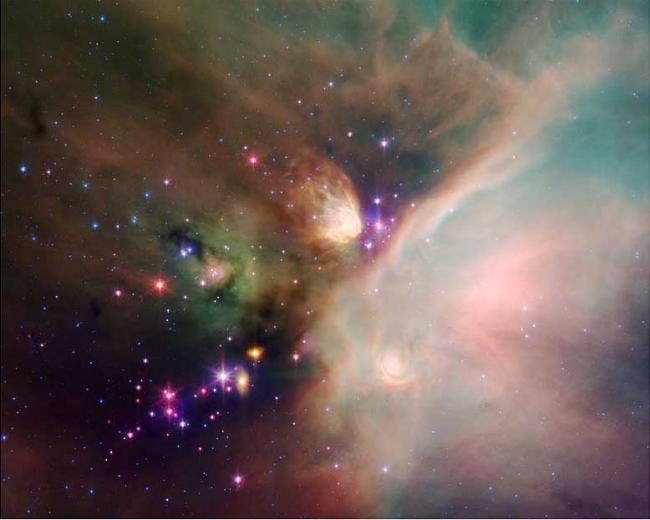
An infrared image of stars forming in the Ophiuchus molecular cloud. Astronomers have concluded that much of the oxygen in this region, previously thought to be strangely missing, is located in water ice.
Oxygen is the third most abundant element in the universe (after hydrogen and helium). It is therefore thought to be an important constituent of the clouds of gas and dust from which new stars and their planets develop. Oxygen is, of course, also essential for life, and all known life forms require liquid water and its oxygen content. Early models of gas clouds predicted that water should be (relatively) abundant - only about a million times less than hydrogen itself - but observations over the past decade found that water is about one hundred times less abundant than expected, and oxygen in its molecular form is similarly scarce. These results have made the whereabouts of oxygen in clouds a major astronomical dilemma.
SAO astronomer Gary Melnick has joined three colleagues in a new paper that successfully explains where the oxygen is likely to be located. The scientists developed models that include the effects of ultraviolet radiation from nearby stars on gas clouds, as well as the chemical combining of oxygen into CO gas, and the effects of oxygen freezing onto dust grains where it can be converted into water ice. Their calculations show that water ice is much more abundant than had been realized - it sharply increases in abundance a short distance into a cloud, once the ultraviolet radiation can be shielded. The oxygen that has so far gone undetected can plausibly be contained in this water ice, at least in the specific cases which they investigate. The results are a landmark in advancing our understanding of interstellar chemistry, and in explaining the mysterious apparent absence of oxygen.
In the News
The New York Times (6 January 2009) featured SAO astronomer Mark Reid's new conclusions on our Milky Way galaxy. Using radio interferometry techniques, he discovered that it is about 50% more massive than we had previously realized. The same NYT article also cites SAO astronomer Elizabeth Humphreys and her discovery of two new young stars close to the black hole at the galaxy's center. Reid's discovery was also featured on The Colbert Show on Comedy Central.
This week's issue of the journal Science highlights the International Year of Astronomy, and features on its cover a spectacular infrared image of the center of our Milky Way galaxy. SAO astronomer Howard Smith was a member of the team that obtained and published the original image, which was taken with the Infrared Array Camera, an instrument whose team is led by SAO astronomer Giovanni Fazio.